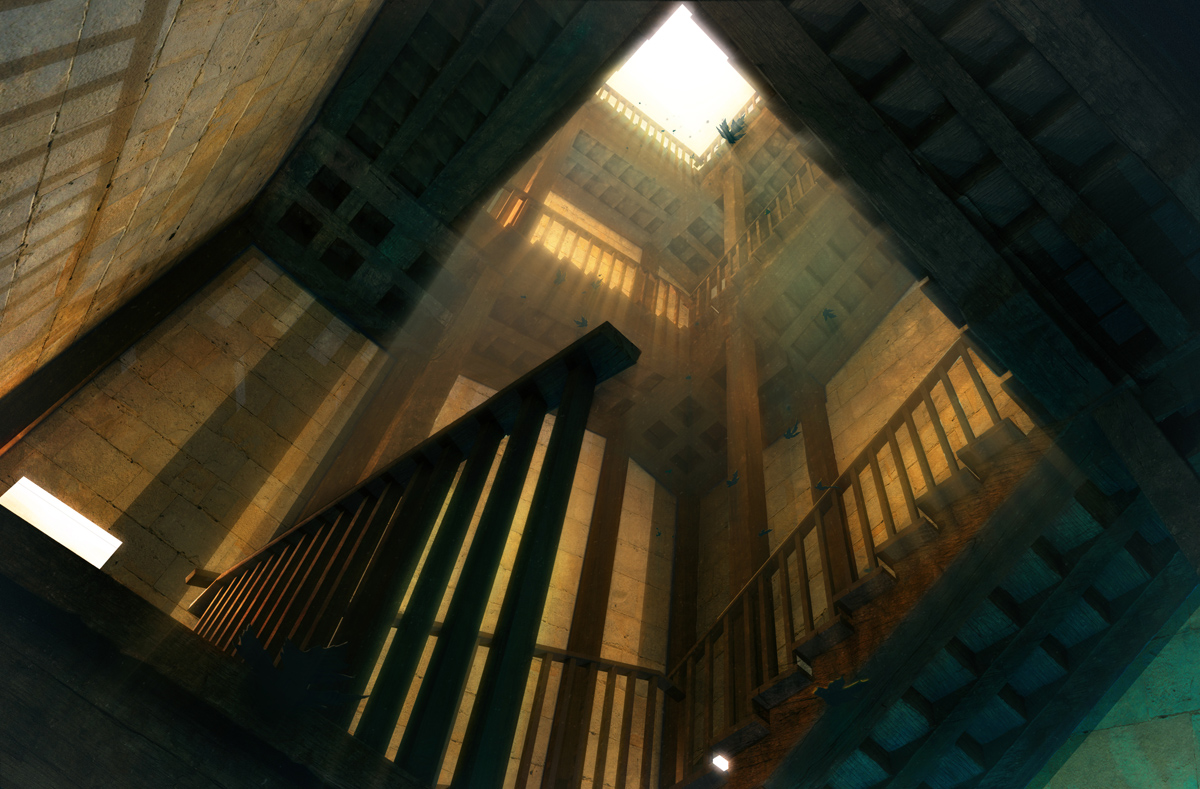The
basic principles of visual composition lie at the heart of all forms
of visual communication, and making sure that these fundamental
building blocks are included in every aspect of art that you create
is vital in making sure that the thing you are creating can be an
accurate reflection of what it is you are trying to depict,
regardless of how fantastical the subject matter. You could paint the
most amazingly stunning piece of work, but all it takes is one slight
error in how you out it all together initially, and the flaw screams
out from the image, becoming blatant in where you went wrong.
 |
| A concept piece depicting good use of scale: the placement of the characters, looking out onto the epic landscape gives the viewer the same sense of a large scale environment. |
In
environmental design, if buildings aren't geometric and viewed with
the correct sense of perspective with their surroundings, then the
overall feel of the environment isn't going to be convincing and only
be a wrongly depicted image of real life. When what it should be, is
a convincing window into an environment that is true to life in the
basic principles, while still being as dynamic and original as
possible, making use space and lighting. Positioning of the
perspective in all compositions is also greatly influential on the
images 'mood', for example, to give a sense of scale a wide field of
view is used to capture a large landscape and sweeping vista's to
show the large scale of an environment. For more enclosed settings, a
viewpoint from close to an object and looking down on them tends to
give things a more 'intimate' atmosphere, and usually works well when
depicting indoors and scenes between characters. The placement of
people within environments is also just as important, as an image to
depict some sort of large scale surroundings is often amplified when
a tiny representation of a person is included, as this gives a good
idea of just how large the environment is in contrast to the person.
This is often seen in games, with the use of the in game camera, as
3rd person cameras over the characters shoulder are often
used in horror games to give a sense of a claustrophobic environment
and to generate fear.... while in open world games, the camera often
pans back at opportune moments to allow the player to take in the
world that seems to stretch around them, allowing them to take it all
in.
Obviously
when an aspect of design concentrates on character development, the
focus on fundamentals is based around proportion and shape, and how
closely they are to real life. Regardless of how sci-fi or fantasy
based the character is, it has to function on the basic functionality
of organic life that exists in our world.... weather it be human or
part of the animal kingdom. Everything is based on functional shapes
and how they work together, and every part of composition shares
that.
With
my own work, in visual design I have slowly began to hone all the
individual elements that make up the rules of composition, it being
the first time ive been taught in detail all the important factors as
opposed to the more randomised way id work before, which would always
demonstrate the important information im missing in the final
outcomes. The process of sketching quickly and repeatedly to nail all
of the important elements down, has been an important factor in how
my 2d work has evolved and how I then tackle my final pieces of work.
Composition in game production is the next step, as it takes things
to the next level by introducing not only the 3d element but also the
dynamic element of time, now that we've begun bringing our work into
game engines. This takes the compositional aspect into the realms of
functionality, and how players can literally interact with things
that were originally just there aesthetically.

No comments:
Post a Comment